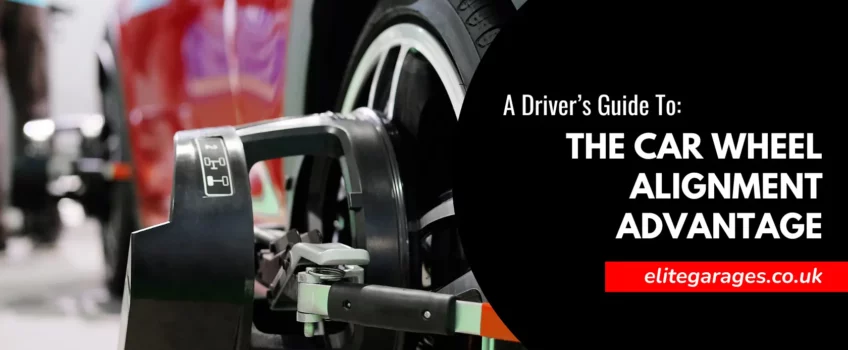
Understanding Car Wheel Alignment and Its Significance
Driving on British roads is not just an experience but also a responsibility. A responsibility to ensure that your vehicle is in tip-top shape, ensuring not just your safety, but also that of others. One critical aspect often overlooked is the car wheel alignment. Let’s dive deeper to understand its undeniable importance.
What Is Car Wheel Alignment?
Wheel alignment, which is also known as wheel tracking, refers to the process of adjusting the angles of the wheels on a vehicle to ensure they are perpendicular to the road and parallel to each other. This adjustment is crucial for maintaining optimal contact between your car’s tyres and the road surface, allowing for safe and efficient driving.
Why Is Wheel Alignment Important?
Proper wheel alignment has a significant impact on your vehicle’s performance and safety. Here are some reasons why it should never be overlooked:
- Safety: Misaligned wheels can cause your car to pull to one side, potentially leading to an accident. Properly aligned wheels ensure that your vehicle tracks straight and handles well.
- Tyre longevity: Misaligned wheels put uneven pressure on your tyres, causing them to wear out quickly. This can lead to frequent replacements and increased maintenance costs.
- Fuel efficiency: When your wheels are misaligned, your car has to work harder to move forward, resulting in increased fuel consumption. Proper alignment reduces tyre resistance and allows for better gas mileage.
How Do I Know If My Car Needs A Wheel Alignment?
If you notice any of these signs, it’s time to get your wheel alignment checked:
- Vehicle pulling to one side while driving on a straight road.
- Uneven or rapid tyre wear.
- Steering wheel not centred while driving straight.
- Vibrations in the steering wheel.
How Often Should You Get Your Wheels Aligned?
Experts recommend getting your wheels aligned every 6,000 miles or every time you get new tyres. However, it’s best to always consult your vehicle’s manual for specific recommendations.
Tyre Safety – The Guardian Angel of Your Journey
Every journey, be it to the picturesque countryside or the bustling city roads of London, safety rides primarily on your tyres. Regular checks for adequate tread depth and overall condition can be the difference between a close call and a regrettable incident.
Speaking of safety, let’s not let the indispensable brake servicing take a back seat. The harmony between effective wheel alignment and impeccable brake performance is music to the ears of every driver. A regular brake check ensures responsiveness, longevity, and above all, peace of mind.
Unravelling the Mystery: Four-Wheel Alignment, Balancing, and Tracking
At Elite Garages, we often encounter queries surrounding the concepts of wheel balancing and wheel alignment. It’s not uncommon for these terms to be used interchangeably, but although they both contribute to the longevity and performance of your tyres, they represent distinct aspects of vehicle maintenance. In this piece, let’s delve into the nuances that distinguish two and four-wheel alignment, tyre balancing, and tracking.
What Is Tyre and Wheel Balancing?
Tyre or wheel balancing is a nuanced process ensuring each wheel’s weight is evenly spread, promoting smooth rotation. In this detailed examination, tiny weights are tactfully added to the wheel’s rim, counterbalancing any irregularities in weight distribution, akin to placing weights on a precision scale to achieve equilibrium.
This intricate balancing act is not confined to the wheel alone but extends to the tyre, ensuring an orchestrated harmony in weight distribution. Signs that your vehicle may be crying out for a wheel balancing service include distinct tyre wear patterns, noticeable wobble around 40 to 50 mph, and intensified vibrations at elevated speeds.
What Is Wheel Tracking?
Tracing its roots to yesteryears, wheel tracking harks back to a time when automobiles were equipped with two adjustable front wheels while the rear axle remained fixed. The front wheels were meticulously ‘tracked’ or aligned to journey in a precise direction, side by side in perfect parallel, while the rear wheels were followers, tracing the path paved by their front counterparts.
In today’s parlance, the term ‘wheel tracking’ is often interchanged with ‘wheel alignment’ or the more comprehensive ‘four-wheel alignment,’ unless the context is a classic car boasting the traditional two-wheel adjustable system.
A Closer Look at Two-Wheel and Four-Wheel Alignment
The process of car wheel alignment involves adjusting the angles and orientation of the tyres using sophisticated tools and equipment. It is pivotal to ensure your wheels are aligned according to the specifications provided by your car’s manufacturer. Neglecting regular alignment checks can result in accelerated tyre wear, posing both a safety risk and an unnecessary expense.
For those navigating the roads in an all-wheel-drive vehicle equipped with an independent suspension system, four-wheel alignment is essential. It encompasses adjustments to the camber and toe for both front and rear wheels, ensuring optimum performance and safety.
Even if your vehicle is not all-wheel drive, the need for a comprehensive four-wheel alignment is universal. Whether you’re driving a front-wheel or rear-wheel-drive car, modern vehicles and SUVs can benefit from the meticulous adjustment of all four wheels to prevent uneven tyre wear and promote balanced handling.
Conclusion: The Importance of Car Wheel Alignment
In the beautiful journey of life, every little aspect, every nuanced detail adds up to create a harmonious experience. Car wheel alignment, though often understated, plays a pivotal role in ensuring your journeys are safe, efficient, and enjoyable.
Isn’t it time you paid attention to those silent tyres, that unassuming alignment, and those ever-reliable brakes? At Elite Garages, we blend expertise with unparalleled customer service to ensure your vehicle is not just serviced but cared for. Find your nearest branch on our website to book your car wheel alignment.
FAQS
Click the + to read any answer or visit our most FAQ page to review the most frequently asked questions across all our Elite Locations.
If you click on a ‘Category’ or ‘Tag’ link, the page will ‘refresh’ and reload the page showing the top of the page first, you’ll then just need to scroll down to the FAQ section to see the results for the Category or Tag you selected.
A car alignment ensures that your wheels are properly positioned, promoting even tire wear, improved handling, enhanced fuel efficiency, and safer driving.
Look for signs like uneven tyre wear, vehicle pulling to one side, off-centre steering wheel, vibrations, or squealing tyres when turning.
If your tyres are worn, replace them first. If they’re in good condition, start with a wheel alignment to prolong tyre life. Always consult a qualified vehicle technician for guidance.
About Us
Opening Times
Saturday : 8:30–4:00
Sunday : closed
More Information
Contact UsCustomer Information Pack
Check MOT Due Date
Free MOT reminder
Careers


